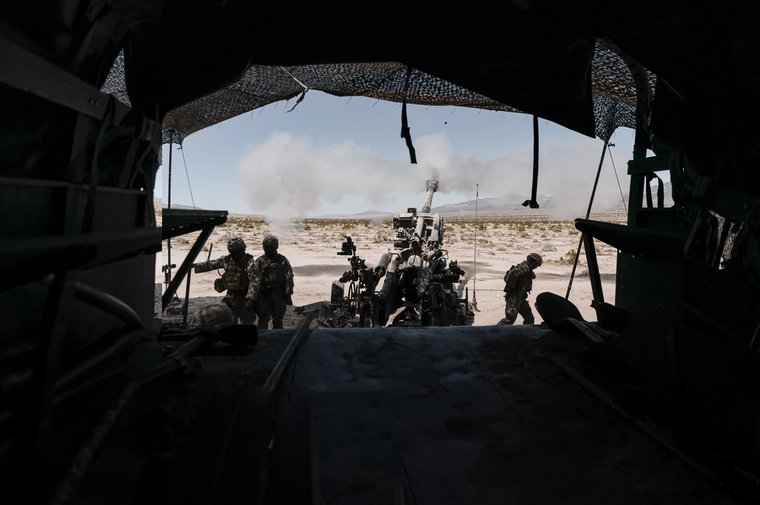Details
More Products & Services
Products & Services
Defence Insight
Shephard Media
Some of the things people like you use Defence Insight for:
- Total addressable market sizing ($)
- Competitor analysis
- Cost analysis
- Market forecasting
- Growth identification
- Increasing closing ratio
- Increasing closing order value
- Estimating product potential
- Calculating sales forecasting
- Supply and demand analysis
- Total addressable market sizing ($)
- Competitor analysis
- Cost analysis
- Market forecasting
- Growth identification
- Increasing closing ratio
- Increasing closing order value
- Estimating product potential
- Calculating sales forecasting
- Supply and demand analysis
Shephard Plus Update
Shephard Media
Shephard Plus is updating in June 2018 with rich new capabilities, and is now one of the most cost-effective and valuable aerospace and defence market intell...
Military Unmanned Systems Handbook
Shephard Media
The Military Unmanned Systems Handbook (Digital Download) is an international guide to the military UV industry and provides detailed information on air, ground and sea (surface & sub-sea) vehicles as well as subsystems. What's included: Unencrypted 390+ page PDF of equipment and supplier information Market summary
Description
As modern battlefields become increasingly automated and transparent to combatants with access to digital tools, planning and executing military operations with greater precision has become ever easier.
It has also created an overwhelming amount of information for modern militaries to deal with, however, which threatens to flood troops and commanders alike in superfluous data. As a result, defence firms have created Battle Management Systems (BMS) which are emerging as important tools in the modern digital battlespace, enabling commanders to network better with their units and speed up responses to fluid combat situations.
BMS tools also function as command or operator aids, generating options for issues like resource management; or helping them to understand enemy courses of action in order to lower cognitive burdens and speed up an actionable response.
Related Articles
Canada to close army BMS capability gap
Spanish Army benefits from new BMS release
UK defence contractor BAE Systems has recently launched its own in-house BMS, the Battlespace Management and Intelligence System (BMIS) app. BMIS can be deployed to wherever it can process the current battlespace picture to and from sensors, effectors and decision-makers.
The app can operate hand-held devices used by troops on the ground and devices at operational headquarters that function to support commanders with greater strategic oversight.
BAE says one major function for the app will be knowledge management. The tool will create a shared view between all involved parties (intelligence analysts, sensors, effectors and decision-makers) of what is happening on the battlefield. This will help commanders track events, unit positions and other developments in a transparent and easy-to-understand manner.
Rachael Hoyle, director of digital defence services for BAE Systems' Digital Intelligence business, said: “A critical development principle incorporated in all aspects of BMIS supporting both threat detection and planning is provenance: ensuring that the system is fully explainable, understandable [to its users] and [that] all outputs are traceable back to input data.
“This removes any reliance on ‘black box' analytics and gives commanders confidence in the back-end processing that enables their rapid understanding and timely data-driven decision-making. BMIS is also designed to be an extensible system should the need arise to overlay some complex data analytics or AI/machine learning functions.”
BMIS also automates planning, accelerating the speed that military commanders and operators can move from conceiving of a plan of action to implementing it.
The app responds to an objective stated by a user, creating a plan which is then validated before it is put into action. This planning function combines a pre-established doctrine (in the form of user-managed Tactics, Techniques and Procedures); knowledge of the assets under management; and the commander or operator's stated objective.
The system then algorithmically derives an optimised solution through those three lenses to suggest a course of action, while taking into account any optimisation constraints that are required to maximise or minimise a specific attribute: for example, time, cost or load balancing for flight hours against airframes. ‘
Finally, the BMIS app has a threat management function. It incorporates automated threat detection into the data law enforcement or military commanders receive about their theatre of operations and enables them to rapidly understand adversaries' next likely intended courses of action.
By removing the fog of war that has traditionally limited commanders' understanding of the battlespace, it lets them take rapid and effective decisions on how best to achieve their mission objectives.
It has also created an overwhelming amount of information for modern militaries to deal with, however, which threatens to flood troops and commanders alike in superfluous data. As a result, defence firms have created Battle Management Systems (BMS) which are emerging as important tools in the modern digital battlespace, enabling commanders to network better with their units and speed up responses to fluid combat situations.
BMS tools also function as command or operator aids, generating options for issues like resource management; or helping them to understand enemy courses of action in order to lower cognitive burdens and speed up an actionable response.
Related Articles
Canada to close army BMS capability gap
Spanish Army benefits from new BMS release
UK defence contractor BAE Systems has recently launched its own in-house BMS, the Battlespace Management and Intelligence System (BMIS) app. BMIS can be deployed to wherever it can process the current battlespace picture to and from sensors, effectors and decision-makers.
The app can operate hand-held devices used by troops on the ground and devices at operational headquarters that function to support commanders with greater strategic oversight.
BAE says one major function for the app will be knowledge management. The tool will create a shared view between all involved parties (intelligence analysts, sensors, effectors and decision-makers) of what is happening on the battlefield. This will help commanders track events, unit positions and other developments in a transparent and easy-to-understand manner.
Rachael Hoyle, director of digital defence services for BAE Systems' Digital Intelligence business, said: “A critical development principle incorporated in all aspects of BMIS supporting both threat detection and planning is provenance: ensuring that the system is fully explainable, understandable [to its users] and [that] all outputs are traceable back to input data.
“This removes any reliance on ‘black box' analytics and gives commanders confidence in the back-end processing that enables their rapid understanding and timely data-driven decision-making. BMIS is also designed to be an extensible system should the need arise to overlay some complex data analytics or AI/machine learning functions.”
BMIS also automates planning, accelerating the speed that military commanders and operators can move from conceiving of a plan of action to implementing it.
The app responds to an objective stated by a user, creating a plan which is then validated before it is put into action. This planning function combines a pre-established doctrine (in the form of user-managed Tactics, Techniques and Procedures); knowledge of the assets under management; and the commander or operator's stated objective.
The system then algorithmically derives an optimised solution through those three lenses to suggest a course of action, while taking into account any optimisation constraints that are required to maximise or minimise a specific attribute: for example, time, cost or load balancing for flight hours against airframes. ‘
Finally, the BMIS app has a threat management function. It incorporates automated threat detection into the data law enforcement or military commanders receive about their theatre of operations and enables them to rapidly understand adversaries' next likely intended courses of action.
By removing the fog of war that has traditionally limited commanders' understanding of the battlespace, it lets them take rapid and effective decisions on how best to achieve their mission objectives.

Share
Recent Chats
Share via email
Future: handle WhatsApp here
Future: handle LinkedIn here
Future: handle Twitter here
SUBMENU HERE
Share via Chat
Copy Link



